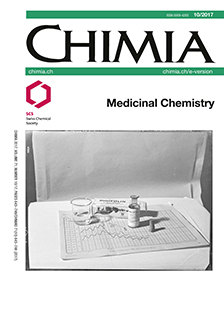Chemical Space: Big Data Challenge for Molecular Diversity
DOI:
https://doi.org/10.2533/chimia.2017.661Keywords:
Chemical spaceAbstract
Chemical space describes all possible molecules as well as multi-dimensional conceptual spaces representing the structural diversity of these molecules. Part of this chemical space is available in public databases ranging from thousands to billions of compounds. Exploiting these databases for drug discovery represents a typical big data problem limited by computational power, data storage and data access capacity. Here we review recent developments of our laboratory, including progress in the chemical universe databases (GDB) and the fragment subset FDB-17, tools for ligand-based virtual screening by nearest neighbor searches, such as our multi-fingerprint browser for the ZINC database to select purchasable screening compounds, and their application to discover potent and selective inhibitors for calcium channel TRPV6 and Aurora A kinase, the polypharmacology browser (PPB) for predicting off-target effects, and finally interactive 3D-chemical space visualization using our online tools WebDrugCS and WebMolCS. All resources described in this paper are available for public use at www.gdb.unibe.ch.Downloads
Published
2017-10-25
Issue
Section
Scientific Articles
License
Copyright (c) 2017 Swiss Chemical Society

This work is licensed under a Creative Commons Attribution-NonCommercial 4.0 International License.
How to Cite
[1]
Chimia 2017, 71, 661, DOI: 10.2533/chimia.2017.661.







